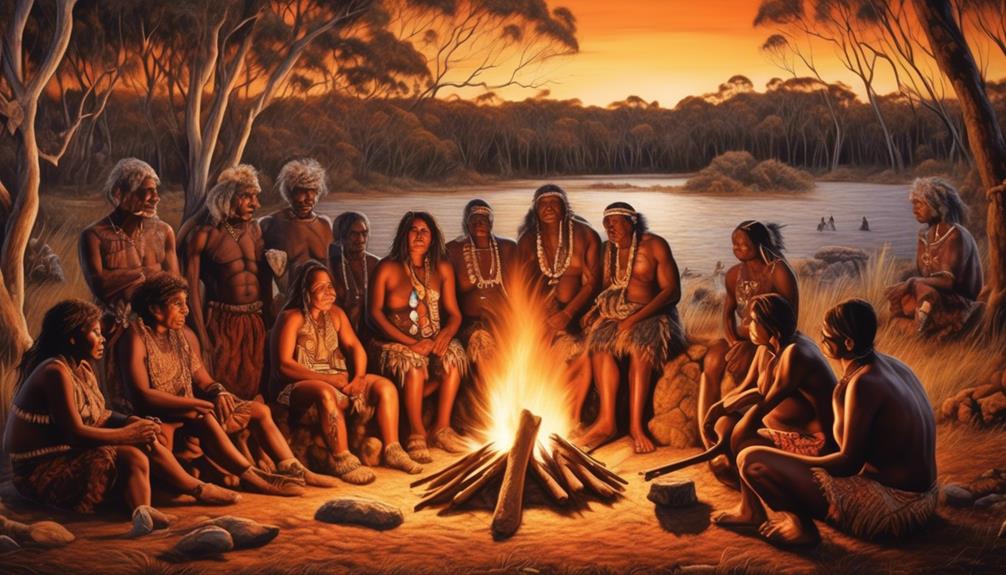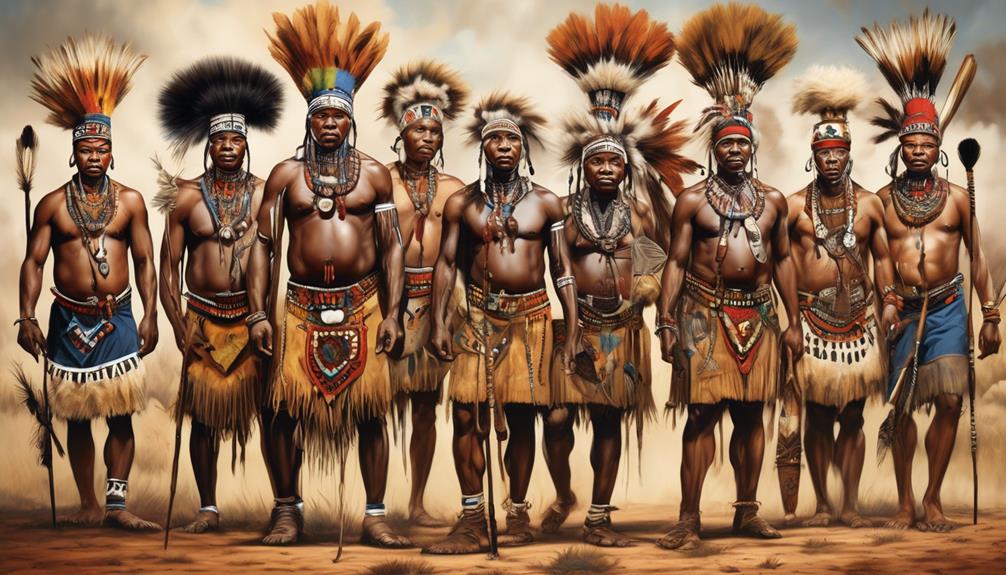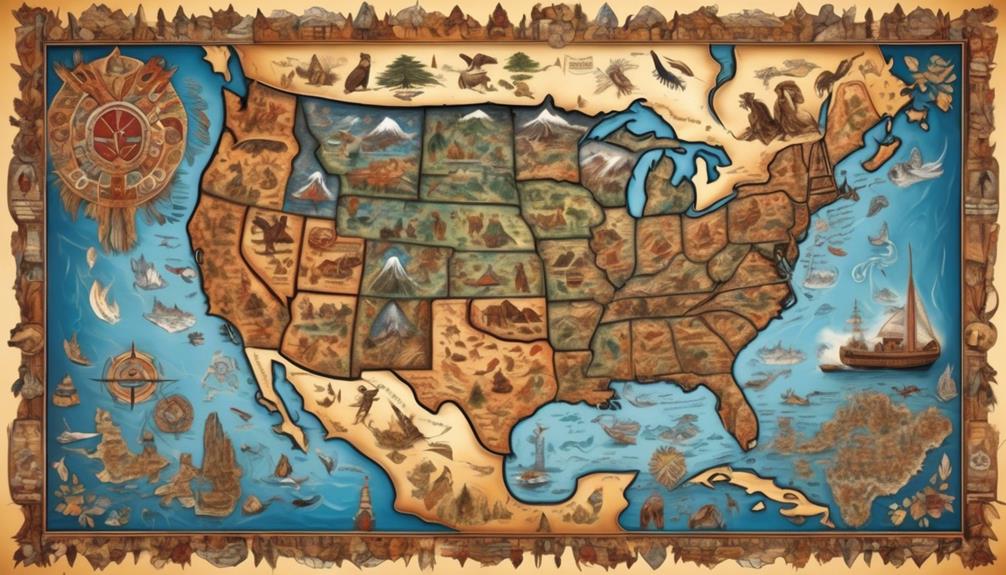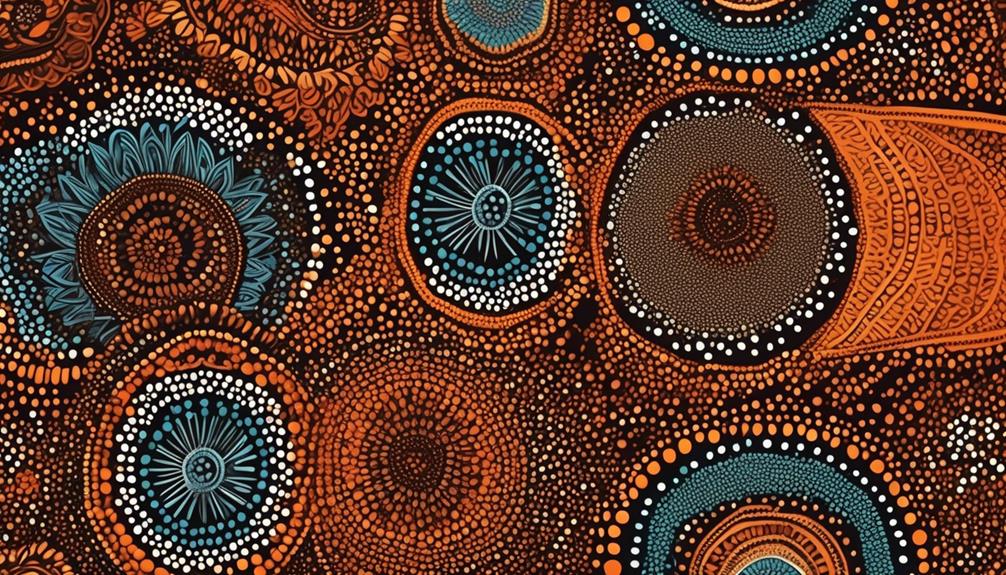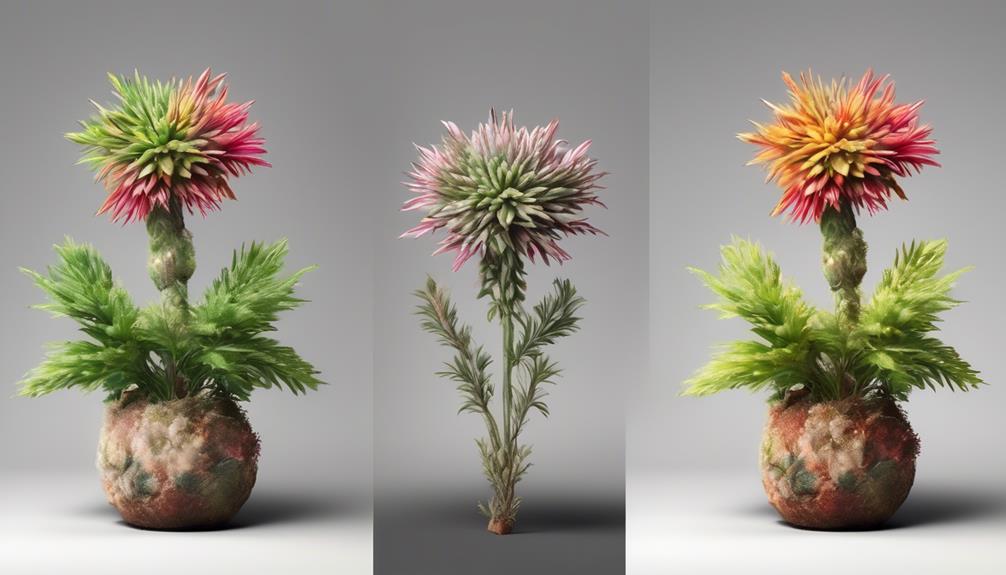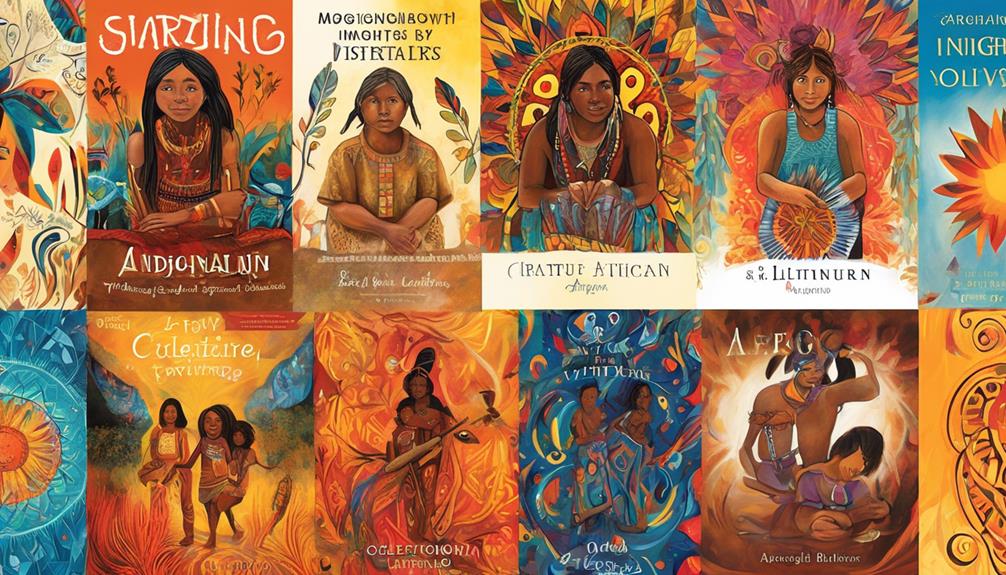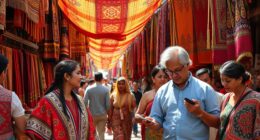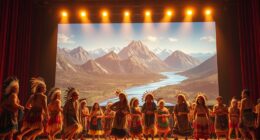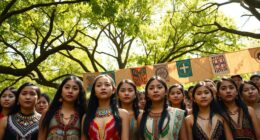Did you ever stop to think about the true origins of the Aboriginal Australians?
There is a prevailing theory that suggests they are the descendants of one of the oldest continuous cultures on Earth, dating back over 50,000 years.
However, as we unravel the complexities of their history, it becomes clear that their story is far more intricate and fascinating than we may have initially thought.
The rich tapestry of their cultural traditions, beliefs, and resilience in the face of colonization offers a window into a world that is both ancient and contemporary.
Join us as we explore the multifaceted identity of the Aboriginal Australians and the enduring legacy they continue to shape.
Key Takeaways
- Aboriginal Australians have a history dating back over 50,000 years, making them one of the oldest continuous cultures on Earth.
- Genetic diversity among Aboriginal Australians provides insights into their migration patterns and how communities spread across Australia.
- Aboriginal Australians have vibrant cultural traditions deeply rooted in their spiritual beliefs, including Dreamtime stories, songlines, and totemic symbols.
- Despite the profound effects of colonization, Aboriginal Australians have shown remarkable resilience and ongoing efforts to preserve and revitalize their languages, cultural practices, and spiritual beliefs.
Ancient Origins and Migration
The ancient origins and migration of Aboriginal Australians are a subject of great interest and ongoing research. Understanding the prehistoric settlement of Australia is crucial in unraveling the rich history of its indigenous people. Genetic diversity among Aboriginal Australians provides valuable insights into their migration patterns and cultural evolution over thousands of years.
Studying the genetic diversity of Aboriginal Australians allows us to trace their origins and migration routes. It reveals the complex web of connections between different Aboriginal groups and their interactions with the environment. By analyzing the genetic variations among different populations, researchers can piece together the intricate story of how these communities spread across the vast Australian continent.
The prehistoric settlement of Australia by Aboriginal peoples is a testament to their resilience and adaptability in diverse landscapes. Their ability to thrive in varied environments speaks to the deep understanding they've cultivated over generations. The genetic diversity among Aboriginal Australians not only reflects their historical movements but also underscores the importance of preserving their heritage for future generations.
Cultural Traditions and Beliefs
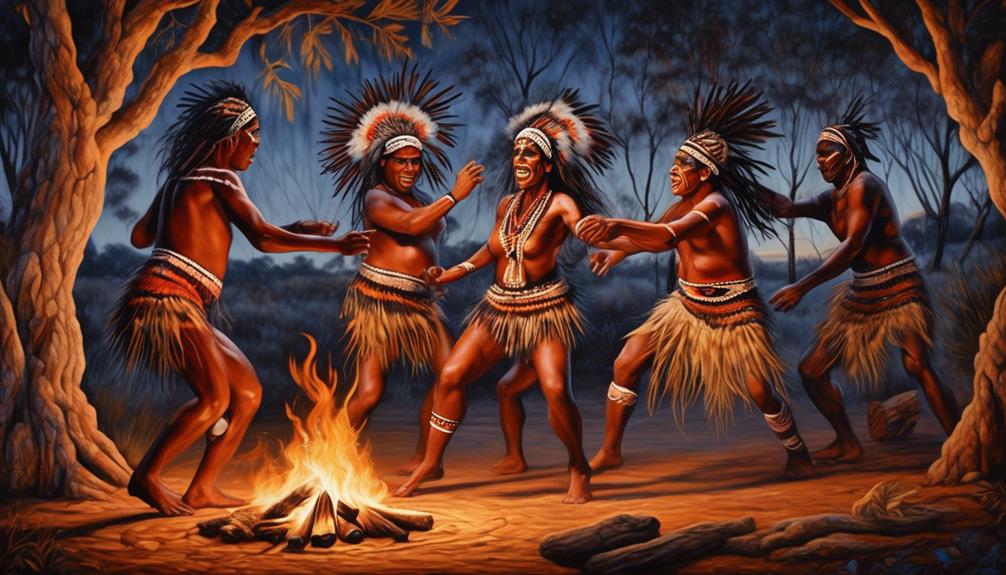
Unraveling the genetic diversity among Aboriginal Australians leads us to the vibrant tapestry of their cultural traditions and beliefs, reflecting the deep connections between their historical movements and their heritage. The rich and diverse cultural traditions of Aboriginal Australians are deeply rooted in their spiritual beliefs, passed down through generations with great reverence.
Key aspects of their cultural traditions and beliefs include:
- Dreamtime stories and rituals: These stories, also known as 'The Dreaming,' are the oral traditions that explain the creation of the world and the spiritual beliefs of the Aboriginal people. Rituals associated with the Dreamtime stories are an essential part of their cultural practices.
- Songlines: Aboriginal Australians use songlines as pathways that traverse the land, carrying the spiritual essence of their beliefs. These songlines are deeply connected to their cultural identity and are often used in ceremonies and rituals.
- Totemic symbols: Each Aboriginal clan identifies with specific totemic symbols, such as animals or natural elements, which are central to their spiritual and cultural identity. These symbols are revered and celebrated in various cultural practices and rituals.
The preservation and continuation of these cultural traditions and beliefs hold profound significance for the Aboriginal Australians, and they play a crucial role in maintaining their spiritual and cultural heritage.
Impact of Colonization and Resilience
After colonization, Aboriginal Australians have demonstrated remarkable resilience in the face of significant challenges to their cultural traditions and beliefs. The effects of colonization have been profound, leading to the loss of land, language, and traditional practices. However, despite these adversities, the Aboriginal people have shown incredible strength and determination in preserving their cultural heritage.
The impact of colonization on Aboriginal Australians can't be understated. It resulted in the forced removal of children from their families, known as the Stolen Generations, and the suppression of traditional ceremonies and languages. These actions had devastating effects on the social and cultural fabric of Aboriginal communities.
In the face of such challenges, the Aboriginal Australians have displayed unwavering resilience. Efforts to preserve and revitalize indigenous languages, cultural practices, and spiritual beliefs have been ongoing. Communities have actively engaged in cultural education programs, artistic expressions, and land management initiatives to maintain and strengthen their cultural identity.
The resilience of the Aboriginal Australians serves as a testament to their unwavering determination to uphold their cultural heritage despite the enduring impacts of colonization. It's a reminder of the importance of supporting and respecting indigenous communities in their pursuit of cultural preservation.
Contemporary Aboriginal Communities
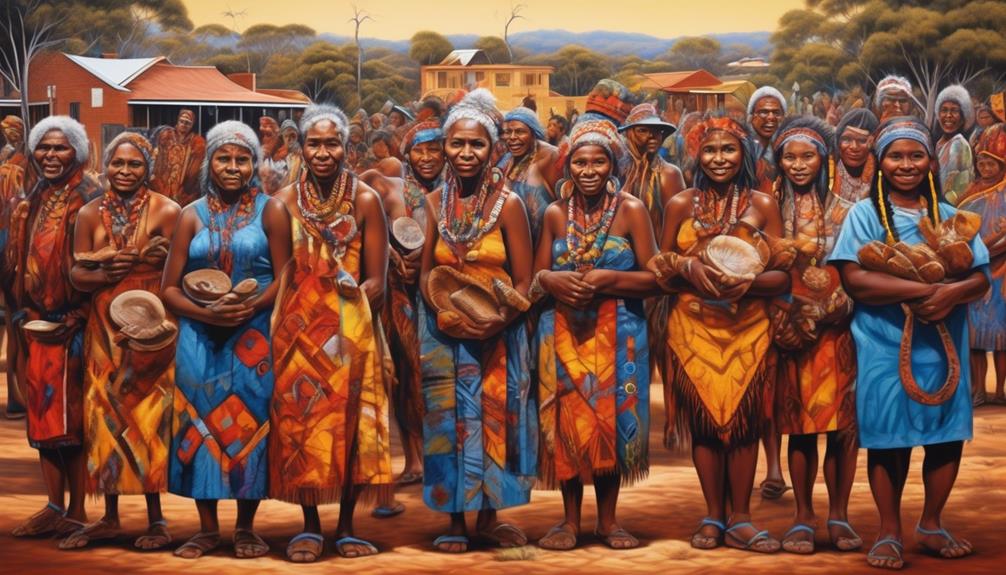
Contemporary Aboriginal communities continue to navigate the complexities of modern society while preserving their rich cultural heritage and traditions. We face contemporary challenges in balancing our traditional ways of life with the demands of the modern world.
Our communities are actively engaged in community development initiatives to address these challenges and ensure a prosperous future for our people.
- Preservation of Cultural Identity: We're committed to preserving our language, art, and spiritual practices, passing them down to future generations.
- Health and Well-being: We're working to improve access to healthcare and address the high rates of chronic diseases within our communities.
- Education and Employment: We're focused on providing quality education for our youth and creating economic opportunities to reduce unemployment rates.
- Land Rights and Environmental Stewardship: We're advocating for the recognition of our land rights and are dedicated to protecting the environment for the benefit of all Australians.
Through these efforts, we strive to build sustainable and thriving contemporary Aboriginal communities while honoring our heritage.
Preserving Heritage and Identity
Preserving our heritage and identity is central to our ongoing efforts in contemporary Aboriginal communities as we continue to navigate the complexities of modern society. Our preservation efforts encompass a range of initiatives aimed at safeguarding our cultural practices and traditions for future generations. One key aspect of our preservation efforts is the revitalization of traditional languages, which are integral to our identity and worldview. In addition, we place great emphasis on the transmission of oral histories and storytelling, ensuring that our rich narratives are passed down through the generations.
To provide a clearer picture, the table below highlights some specific preservation efforts and cultural practices that are fundamental to our identity and heritage:
| Preservation Efforts | Cultural Practices |
|---|---|
| Language revitalization | Oral storytelling |
| Recording oral histories | Ceremonial rituals |
| Protecting sacred sites | Art and craftsmanship |
These efforts not only serve to preserve our heritage but also contribute to the broader tapestry of Australian society, fostering mutual understanding and respect.
Frequently Asked Questions
What Are Some Common Misconceptions About Aboriginal Australians?
We often face misunderstandings about the Aboriginal Australians' identity and cultural heritage. Common misconceptions include stereotyping them as a homogeneous group, ignoring their diverse languages and traditions.
Another misconception is viewing them as a historical relic, overlooking their vibrant contemporary presence.
It's important to recognize the richness and complexity of Aboriginal Australian cultures and to engage with them respectfully and with an open mind.
How Do Aboriginal Australians View Their Relationship With the Land and Environment?
In discussing the Aboriginal Australians' relationship with the land and environment, traditional practices play a vital role.
Environmental stewardship is a cornerstone of our culture, as we've long recognized the interconnectedness of all living things.
This commitment to cultural preservation is evident in our ongoing efforts to maintain our ancestral lands and protect them from modern encroachments.
Our adaptability has allowed us to incorporate modern methods while honoring our deep ties to the land.
What Are Some Traditional Practices and Customs That Are Still Observed by Aboriginal Communities Today?
Traditional practices and customs are still observed by Aboriginal communities today. Cultural preservation is important to us, and we continue to pass down Indigenous spirituality and community celebrations to future generations.
These traditions connect us to our ancestors and the land, fostering a deep sense of identity and belonging. By upholding these practices, we honor our heritage and maintain a strong connection to our culture and history.
What Are Some Examples of Contemporary Aboriginal Art and Its Significance?
Contemporary interpretations of Aboriginal art often reflect the rich cultural significance of traditional stories and spiritual connections to the land. These artworks can include vibrant paintings, intricate dot paintings, and modern sculptures that carry on the legacy of indigenous artistic expression.
How Do Aboriginal Australians Navigate the Balance Between Preserving Traditional Culture and Embracing Modernity?
Navigating identity is like weaving through a rich tapestry of tradition and progress. We embrace modernity while holding onto the wisdom of our ancestors. It's a dance, a graceful melding of old and new, where our heritage thrives in the present.
Our journey is a testament to resilience and adaptation, honoring our roots while embracing the future.
Conclusion
In conclusion, the Aboriginal Australians are a diverse and resilient people with a rich cultural heritage. Their ancient origins and migration patterns have shaped their unique traditions and beliefs, which continue to be preserved and celebrated today.
Despite the impact of colonization, Aboriginal communities have shown remarkable resilience and strength in preserving their heritage and identity. They're like a vibrant tapestry, weaving together the threads of their past and present to create a beautiful and enduring cultural legacy.
Mary is a passionate writer who brings creativity and a fresh perspective to our team. Her words have the power to captivate and inspire, making her an essential contributor to our content. Mary’s commitment to storytelling and dedication to promoting Indigenous culture ensures that her work touches the hearts of our readers. We’re fortunate to have her as part of our team.
